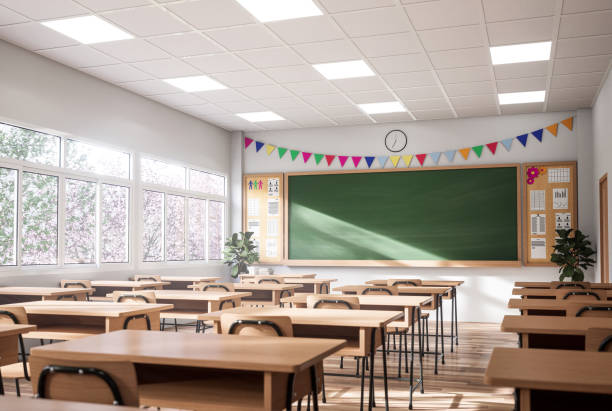Each person has a unique manner of thinking and learning. Students’ learning styles refer to how individuals perceive, learn, absorb, comprehend, process, and remember knowledge. The authors claim in their paper “The Myth of Learning Styles” that “learners differ from one another, these variations affect their performance, and teachers should take these variances into account.”
Teachers must understand their students’ preferred learning styles and employ learning methods and tactics that match the requirements of each student. Students should not be pushed to study in a certain method since it will harm their performance; rather, they should be encouraged to be more creative and learn with a practical approach for better comprehension.
Learning Styles: An Overview
In a typical classroom setting, textbooks and blackboards are used to facilitate learning. Teachers’ teaching approaches are boring, with them explaining what is available in textbooks. Students do not gain a practical understanding of a topic in this manner and simply receive a general understanding.
This method of teaching focuses solely on performance rather than student knowledge growth. However, if teachers understand the various learning styles of their pupils, they may better incorporate them into the study schedule, curriculum, and assessments.
Students have their own learning styles and knowledge so how each kid learns is different. If a student is asked to perform and explain an experiment, some may comprehend verbal instructions, others may understand written instructions, and some may need to experiment realistically to understand and explain.
These are the many learning styles of pupils that represent their method of thinking and learning. Students’ learning styles are influenced by cognitive, emotional, and contextual elements, as well as their personal experiences.
As a result, kids should be exposed to a variety of learning styles and tactics that will be beneficial to them in the future.
Learning Styles in Bangalore’s Top International Schools
The best international schools in Bangalore have implemented an education system that caters to students’ learning interests. They offer curriculum and teaching methods that emphasise students’ holistic growth and skill development.
The 9 GEMS holistic pedagogy is a synthesis of ancient and modern educational techniques that discovers and promotes students’ talent as they are discovering themselves and broadening their learning horizons. Students at these international schools are nurtured in an enthusiastic learning atmosphere where teachers’ teaching techniques are designed based on an examination of the student’s learning styles, allowing them to cope with problems and be competent with modern learning approaches.
Education is advanced in an IGCSE Bangalore school, where pupils have numerous opportunities to explore their talents and knowledge. Students at the best international schools have the following distinct learning styles:
1. Digital technologies such as whiteboards are used in classrooms to make sessions more participatory.
2. Interdisciplinary teaching improves students’ creative and imaginative talents by teaching them to address problems using more than one discipline.
3. To improve learning and understanding, online learning approaches such as virtual classrooms, video, and audio sessions are used.
4. An IGCSE school believes that each student is unique and interesting, with different learning styles. The school provides a platform for students to explore and experiment with their passions, whether it is technology, research, or something else.
5. Students learn the value of teamwork, leadership, and entrepreneurship through a specific curriculum and teaching methods.
Methods of Instruction
Different learning styles of students must be understood and identified by teachers for them to guide and teach the pupils appropriately. Adapting learning styles in an IGCSE Bangalore school is an important success factor since it allows pupils to get more knowledge and an in-depth comprehension of a subject.
Introducing learning styles and tactics based on students’ interests will help them become rapid learners and create a love of lifetime learning.
Here are the eight learning styles that might assist teachers and students in determining which style the pupils belong to.
1. Visual Thinkers
If you enjoy sketching, cartooning, doodling, and other forms of drawing, you are a visual learner. The learner understands graphs, tables, pictures, charts, visual information, and more in this category.
2. Auditory Learners
Aural, auditory, and musical learners benefit from reading aloud or hearing information. Students can boost their learning by reading aloud, listening to music, listening to audiobooks, and so on.
3. Physical Educators
Sometimes acting is more effective than telling. To study better, students must have hands-on or practical experience. They are also known as Kinesthetics learners because they learn through drawing, role-playing, experimenting, acting, narrating, or using things such as puzzles, blocks, flashcards, and so on.
4. Verbal Learners
Language is used by verbal or linguistic learners to learn. Students express themselves orally or in writing in this setting. Wordplay, rhymes, tongue twisters, group discussions, class presentations, vocabulary building, and other strategies aid in verbal learning.
5. Analytical Thinkers
Analytical students must understand the logic behind any idea given. They recognise patterns and like logical reasoning. These students can be trained using materials that involve interpretation and problem-solving ability, fact-based conclusions, and reasoning.
6. Social Learners
Social learners prefer to work in groups. They enjoy interacting and socialising with people. Group activities, tales, role-play Q&A sessions, and other CCA activities can promote this type of learning.
7. Independent Learners
Solo learners prefer to learn in solitude, away from the distractions of others. When they study alone, they perform and learn better. Activities such as keeping a personal journal exercise that demands individual learning and problem solving, and congratulating them on their accomplishment can all support this type of learning.
8. Natural Learners
Natural learners are people who have a strong connection to nature. They learn best when they are surrounded by greenery and peace. Hands-on experiments, outdoor sessions, and instances of nature in education can all be used to facilitate this type of learning.
Conclusion
Begin your investigation right away to determine which type of learning style preference best fits your learner.







